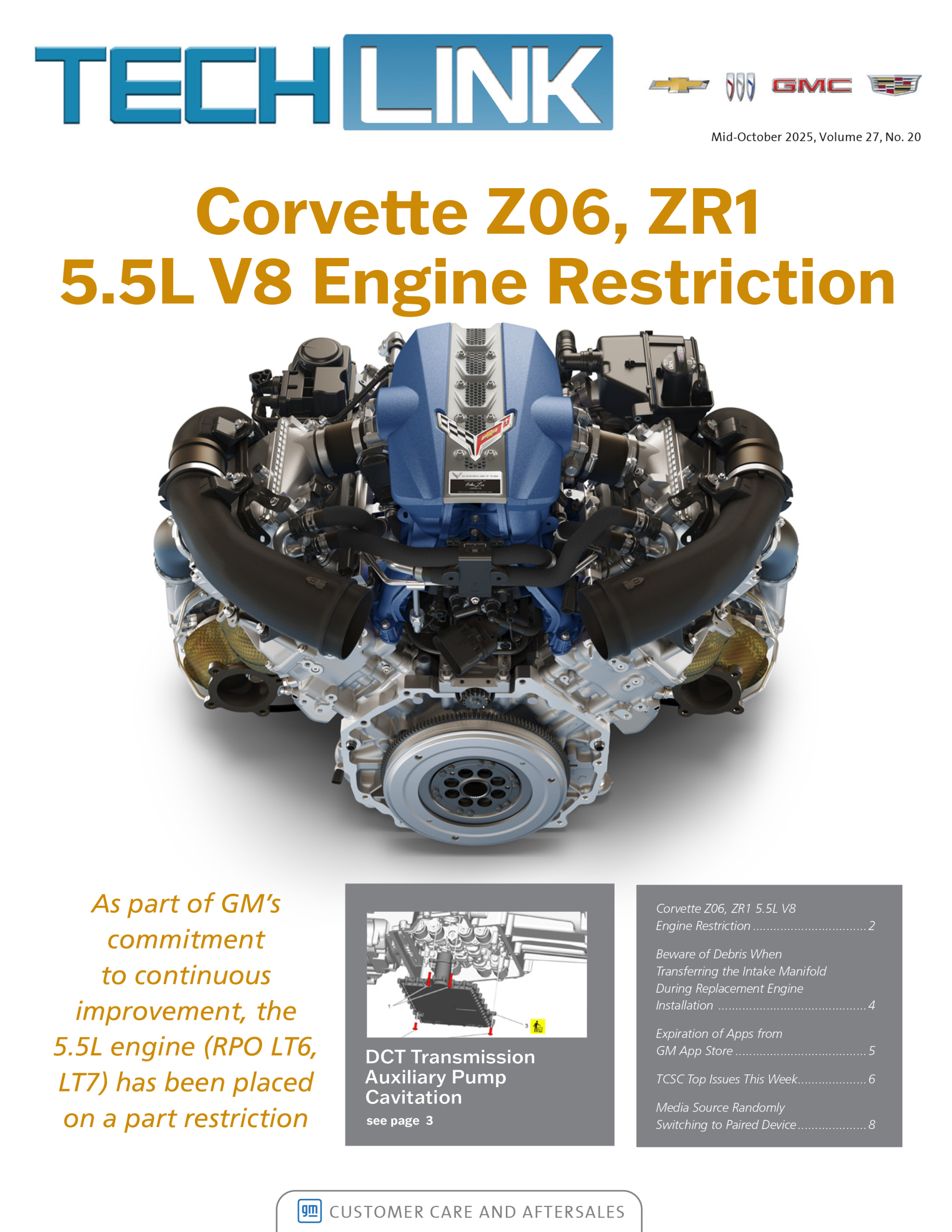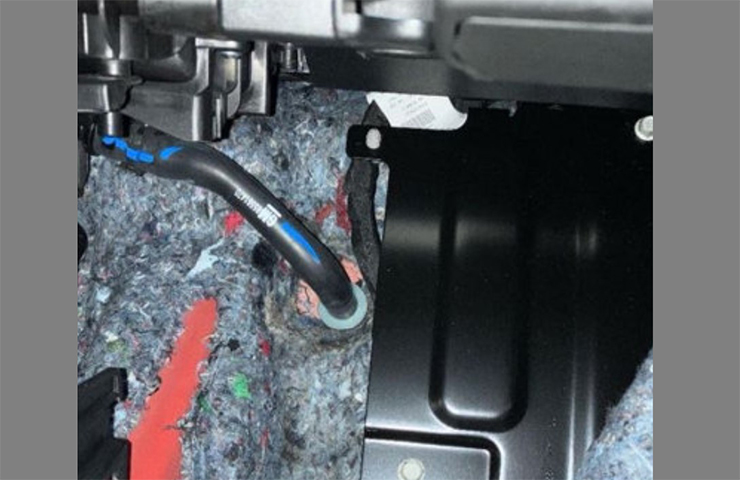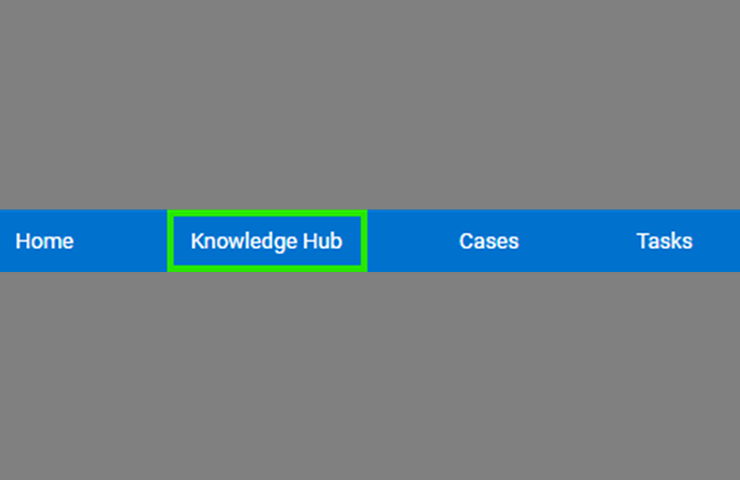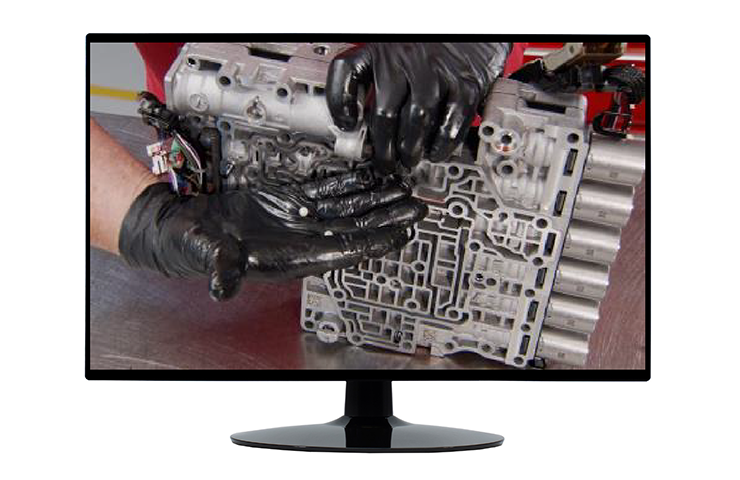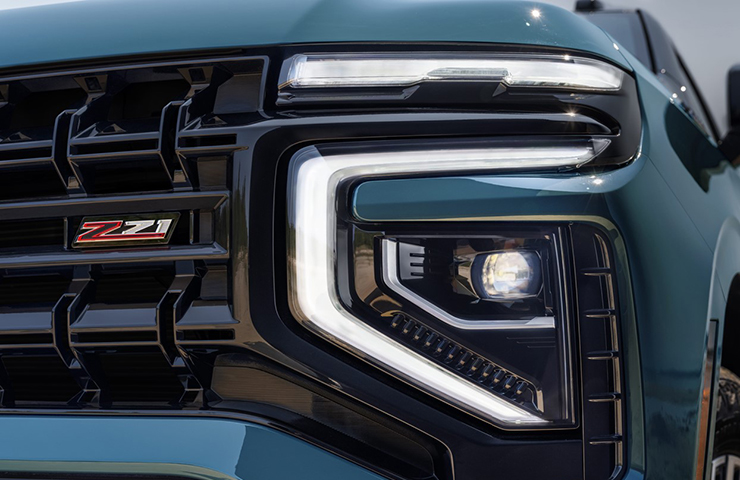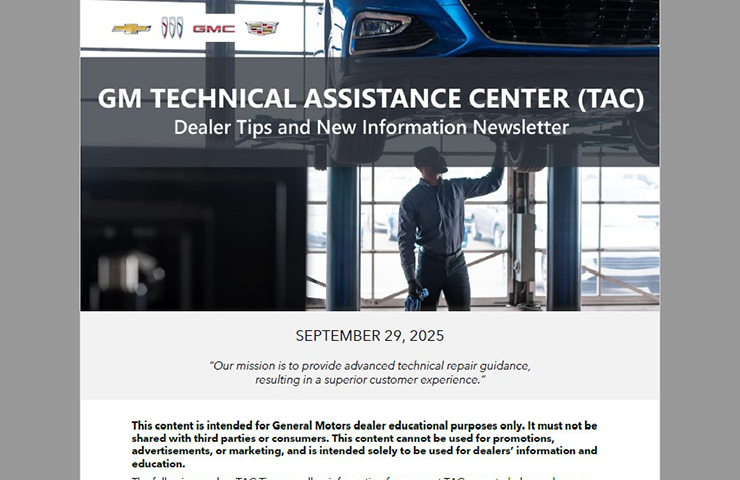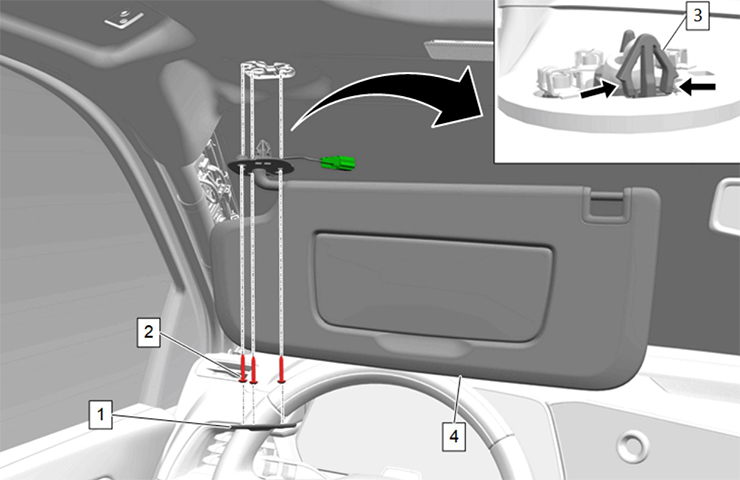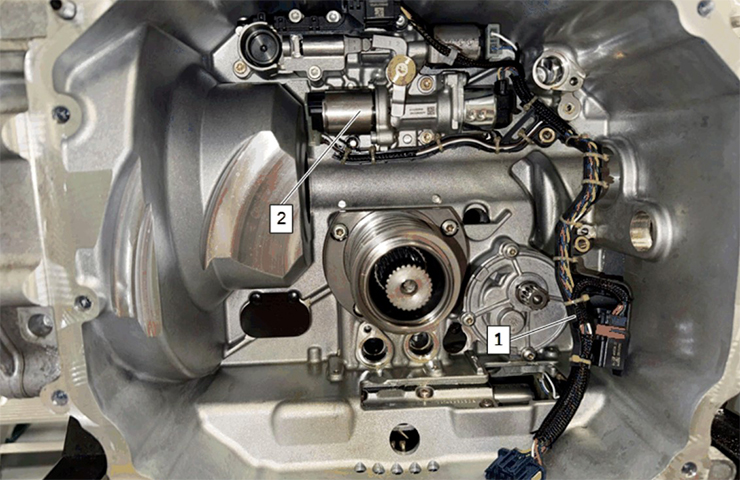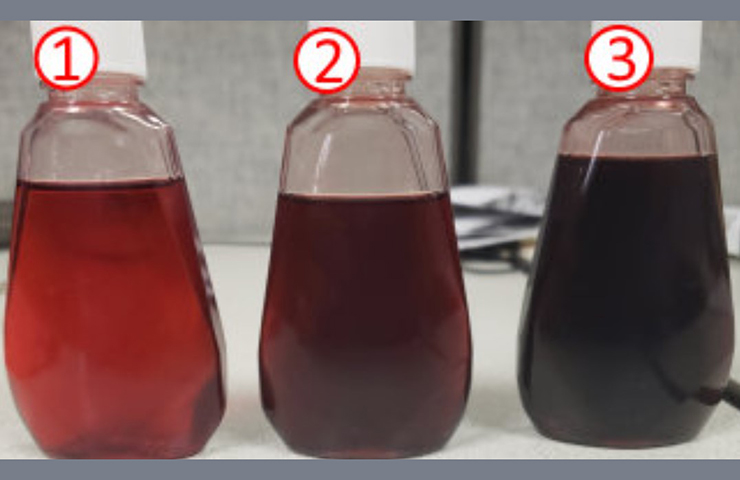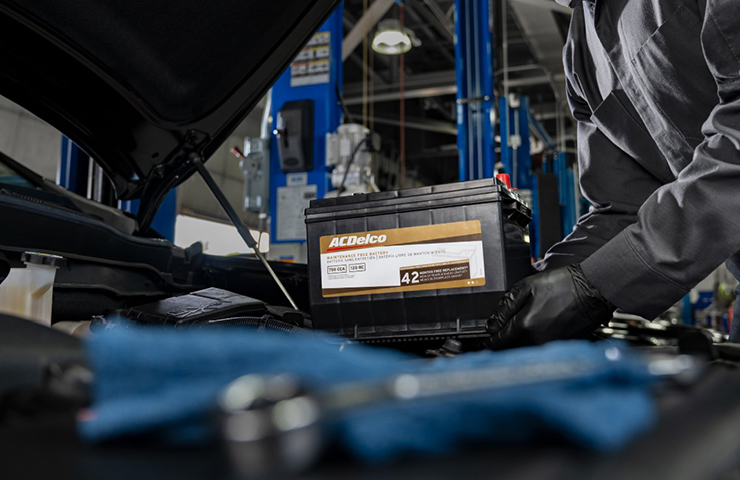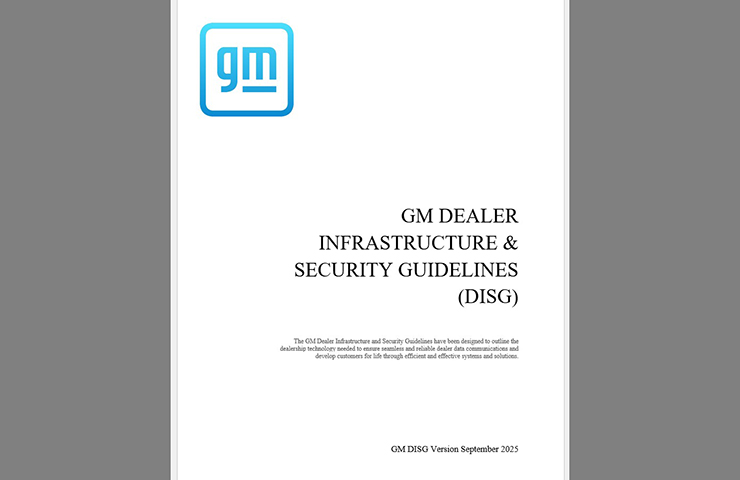Some 2011-2016 Cruze; 2012-2020 Sonic; and 2013-2020 Encore and Trax models equipped with the 1.4L engine (RPO LUV) may experience a loss of power or several other engine performance conditions along with an illuminated Check Engine MIL. After driving for a period of time, the engine performance issues may seem to diminish.
The engine performance conditions may cause an increase in crankcase pressure, leading to potential oil leaks at seals and gaskets. As a result, the following DTCs may be set: P0299 (Engine Underboost), P0234 (Engine Overboost), P0236 (Turbocharger Boost Sensor Performance), P2227 (Barometric Pressure (BARO) Sensor Performance), P2261 (Turbocharger Bypass Valve Stuck) and P00C7 (Intake Air Pressure Measurement System – Multiple Sensors Not Plausible).
If the performance and drivability issues are present, check for a restricted flow through the bypass solenoid, moisture from the intake vacuum reservoir accumulating and damaging the bypass solenoid, contamination such as ice, water, oil or sludge at the charge air bypass valve, ice accumulation in the intake manifold blocking the PCV passage in the cylinder head, ice accumulation in the charge air cooler restricting air flow to the throttle body and ice plugging the crankcase vent tube during very cold weather conditions.
New Design Intake Manifold
If contamination is found at the charge air bypass valve, disassemble and clean the charge air bypass valve and replace the intake manifold with the updated design part. (Fig. 1) Vehicles with the old design intake manifold should have the updated design intake manifold installed. In addition, replace the charge air bypass valve if necessary.
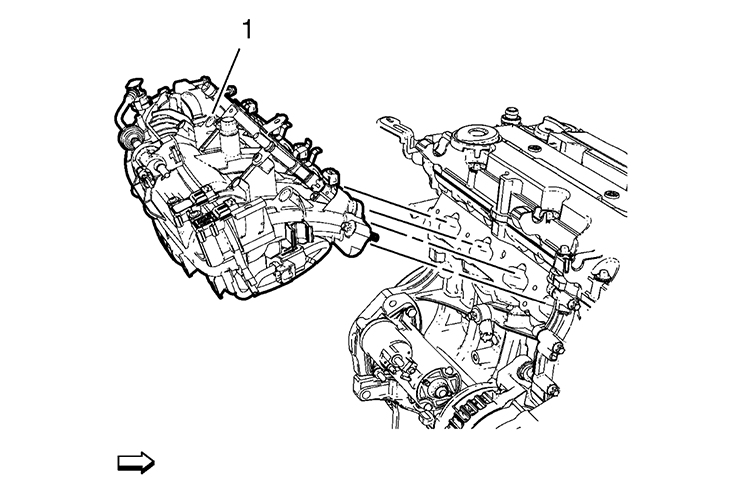 Fig. 1
Fig. 1
Turbocharger, Intake Manifold and Cylinder Head Inspection
Inspect the charge air bypass valve for ice, water, oil or sludge build-up in the vacuum side port. (Fig. 2) If there is only oil or water build-up in the valve port, disassemble and clean the components. Replace the components only if necessary.
 Fig. 2
Fig. 2
If the desired boost pressure vs. the actual boost pressure is not within limits, but there is not any trouble found with the turbocharger wastegate actuator or turbocharger, do not replace the turbocharger. Clean the charge air bypass valve in the vacuum side port and replace the intake manifold.
In addition, inspect the PCV intake runner for any sludge/water/ice blocking the cylinder head. (Fig. 3) Clean the cylinder head, cam cover and PCV pipes. If any contamination is found, replace the intake manifold.
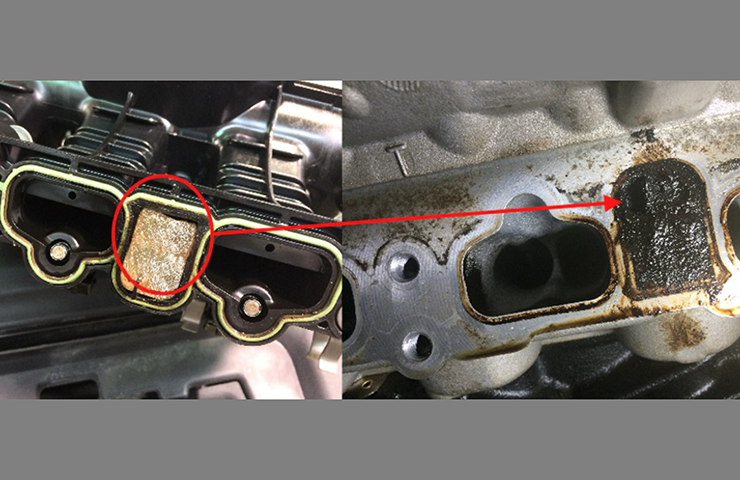 Fig. 3
Fig. 3
Intake Manifold
The new intake manifold has a redesigned intake positive pressure port location. (Fig. 4, #2) Solenoid location is forward of the electrical connector. (Fig. 4, #3) The bypass valve vacuum feed is in the same location. (Fig. 4, #1)
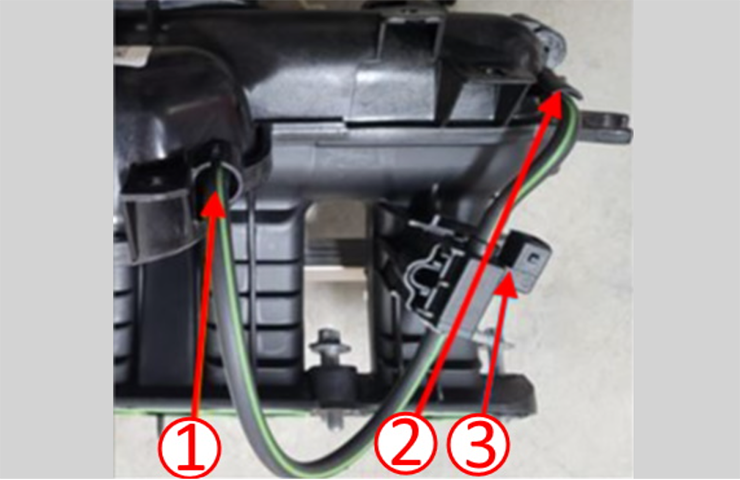 Fig. 4
Fig. 4
If the solenoid is loose, review the location of the electrical connector. If the connector is facing the cylinder head, it is installed backwards (Fig. 5, shown with incorrect solenoid installation) and should be removed and installed correctly. The solenoid is keyed and, if the tabs are reversed, the retainers will not be seated.
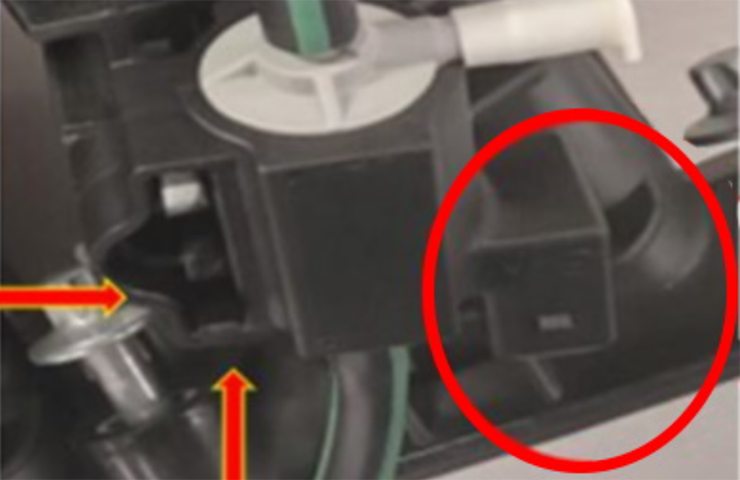 Fig. 5
Fig. 5
For more information and part numbers, refer to Bulletin #22-NA-067.
– Thanks to Scott Willems

